“Spring is my favourite time in the mountains,” says Adam Whale of the British ski school New Generation.
“There’s some great skiing to be had, and the longer days and warmer weather keep the atmosphere relaxed and happy. I’ve been teaching for five years in Courchevel, and my favourite run at this time of year is the Combe de Pylone black, which sits in the shade for most of the day and usually holds its snow well.”
Of course, with the yo-yoing temperatures, spring snow often goes through a daily cycle of melting and overnight refreezing; and to get the best from the conditions, you need your wits about you. Here, Adam lays out a canny strategy for maximising your late-season fun.
1. Stay in bed for an extra half an hour
The usual advice is that you need to be first on the lifts to get the best snow in a ski resort. But that doesn’t always hold true in spring. If the skies were clear overnight, that usually means the snow has refrozen – and it will be rock solid for the first 30-45 minutes of the day. If you’re planning to ski the pistes, have a lie-in or a leisurely breakfast, and head up just after the sun first hits the slopes.
2. Work out which slopes face east, south, west and north
What time the snow softens is heavily influenced by the aspect of the slope, ie in which direction it’s facing. So before you catch your first lift, work out which parts of the mountain are facing are facing east, south, west and north. Then start skiing on the east-facing slopes, as they get the first of the sun. You’ll want to get there about 30 minutes after the sun does, when the top layer of snow has softened a touch but the base is still solid. This is the ideal time to crank over the carvers and have a blast on velvety-soft snow.
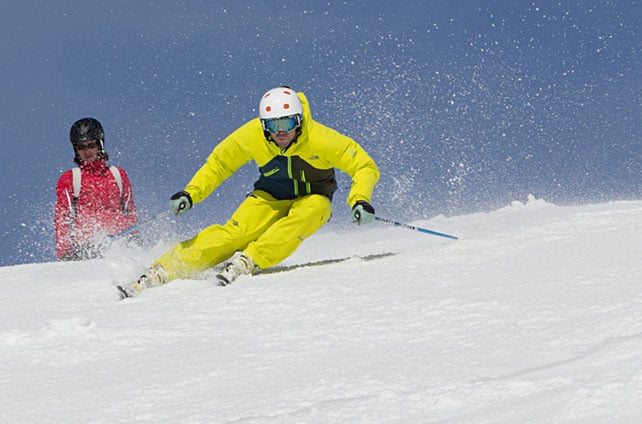
3. Move on before conditions get too slushy
It doesn’t take long for the sun to warm the lower levels of snow, and soon enough the east-facing slopes will be slushy. Don’t hang around and wait for that happen, instead after a couple of runs move on to the south-facing slopes, and then eventually the west.
4. Finish at lunchtime, facing west
By lunchtime you’ll skied the best of the snow, and the icy pistes will now be slushy bumps. These can be a lot of fun: and if you’ve got any strength left in your legs I’d thoroughly recommend them. Make sure you keep your feet close together, to form what’s effectively a single skiing platform, and try to keep your head at the same height the whole way down, flexing your legs as you rise up each bump, and extending on the way back down.
Then it’s time for lunch. It might be picnic by the pistes. Or it could be on the sundeck of a mountain restaurant. If it’s the latter, make sure you’re facing west so you stay in the sun (and warmth) as the afternoon progresses. Lots of these tables get snapped up quickly so plan ahead and reserve your spot.
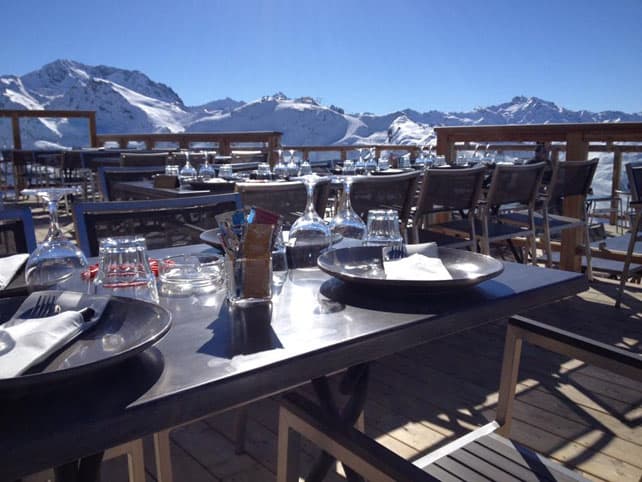
5. Ski in the shadows or at 3000m after lunch
For skiing after lunch head high, or aim for slopes that are north-facing and have stayed in the shadows. If you can, get above 3000 metres, where the snow is less likely to have been affected by the freeze-thaw cycle, and conditions might still be wintery.
6. Look for corn snow if you’re heading off-piste
If skiing off-piste is your passion, you’ll be glad to know that spring snow can be nearly as much fun to ski as deep, mid-winter powder. But just as with piste-skiing, the trick is to ski the right slope at the right time.
What you’re looking for is corn snow. On warm spring days, the snow gets wet and heavy just as it does on the pistes, and if it refreezes overnight it forms a solid, load-bearing crust. The next morning, as it warms up again, the surface softens and becomes grippy and smooth, with a firm base underneath. This is corn or firn snow. Ski it at the right moment and it’s a delicious experience.
Timing is everything. Ski the snow too early, and the snow will be rock hard: too late, and it will be thick, impenetrable mush. As a rule of thumb I’d say you want to be on your chosen slope an hour after direct sunlight first hits it. But really, it all depends on the temperature and the speed with which it’s rising. You need to be wary of avalanches too. The freeze-thaw process can be good for snow-pack stability, but there’s always a risk of wet-snow slides as the day warms up, especially in the period immediately after a dump. You should aim to be finished by late morning.
As ever with off-piste make sure you are wearing all the right safety gear (transceiver, probe, shovel, ABS pack), veer on the side of caution, and unless you’re an expert skier with lots of experience of spring conditions, ski with a qualified instructor from your resort, or a mountain guide.
7. Take up ski-touring
Spring is the best time to take up ski touring. Warmer weather makes it a far more enjoyable experience than in mid-winter, and the longer days give you more time to reach your destination. What’s more, the freeze-thaw process generally leaves steep slopes in a safer condition, and this is why many famous routes, such as the Haute Route, are best undertaken in April or May.
Nevertheless, if temperatures are set to soar it’s best to set off early to minimise the avalanche risk. And be sure to go prepared if you’re heading into the back-country. Avalanche transceiver, shovel and a probe are a must – as well as sun-block, food and plenty of liquids.
Not convinced if touring if worth the effort? Check out this short video some of our guys shot in Val d’Isere earlier this season….










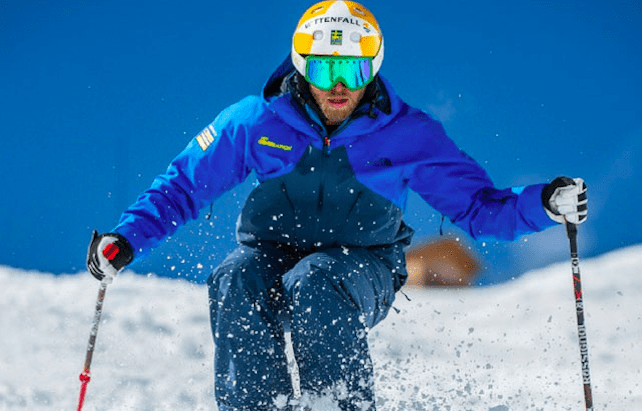

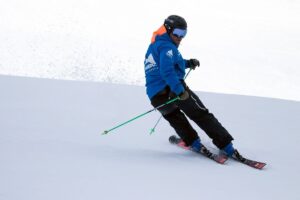
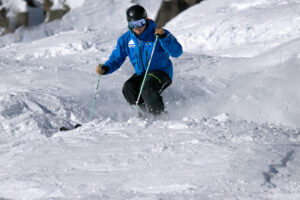
Love the video. Heading to Val tomorrow and eyeing up the half meter due on Saturday night….